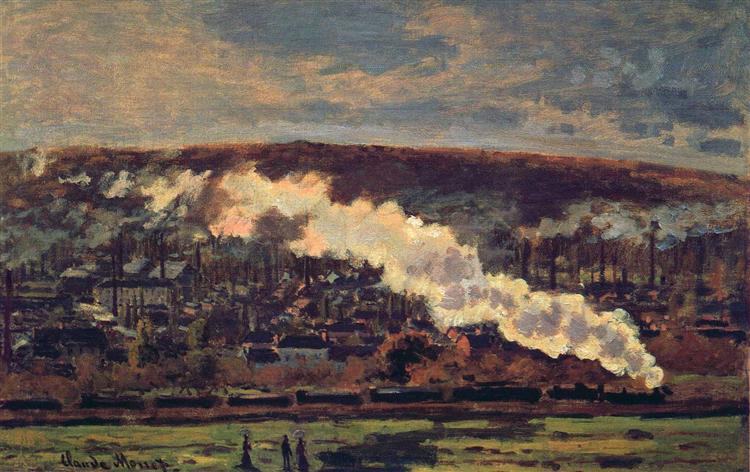Beskrivelse
In his 1872 painting The Train, Claude Monet captures a vibrant and dynamic scene evoking the advent of modernity in the French landscape. Part of the collection of the Musée d'Orsay in Paris, this painting is notable for its depiction of a steam locomotive in motion, symbolizing progress and the radical change brought about by the Industrial Revolution. Monet, as one of the founders of Impressionism, moved away from detailed academic depiction to embrace the capture of light and movement, and The Train is a clear example of this approach.
The composition focuses on a locomotive moving forcefully towards the viewer, creating a sense of immediacy. Looking at the painting, one notices how Monet uses loose, rapid brushstrokes that bring the scene to life, making the train seem to almost vibrate as it passes. The smoke emanating from the train’s chimney disperses in soft shades of grey and white, contrasting with the robust colours of the engine, reinforcing the idea of movement and energy. The shades of blue and green surrounding the scene provide balance, suggesting a natural environment that is altered by the arrival of technology.
In the background, blurred figures can be distinguished, possibly workers or spectators, immersed in the activity of the moment, although they are not defined in detail. This choice by Monet highlights an important aspect of Impressionism: the capture of an ephemeral instant, where human figures are almost secondary to the spectacle of the locomotive in action. The atmosphere of the work becomes a tribute to an era of significant change, where rural and industrial life began to intertwine.
Monet sought not only to depict reality, but also to convey a sense of what he experienced in front of the scene. Every brushstroke, every choice of colour, is imbued with his vision and his interpretation of light and atmosphere. The work reflects not only the artist's fascination with the immediacy of the train, but also with the dynamism of modern life.
This canvas, although often considered lesser-known than some of his more iconic works, embodies many of the aesthetic principles that Monet and his contemporaries espoused. The depiction of movement, light and colour vibrancy in The Train can establish a dialogue with other contemporary works that explore similar themes of modernity and change, such as the train series by other artists of the time and early photographic explorations of industrial landscapes.
Thus, The Train is not only a painting that documents a particular moment in art history, but also invites reflection on the impact of technological change on the perception of landscape and everyday life. Monet, with his distinctive style and penetrating gaze, offers us a glimpse into a time of transformation through a work that, while seemingly specific in its subject, resonates in its universality and historical relevance.
KUADROS ©, a famous painting on your wall.
Hand-made oil painting reproductions, with the quality of professional artists and the distinctive seal of KUADROS ©.
Painting reproduction service with satisfaction guarantee. If you are not completely satisfied with the replica of your painting, we will refund 100% of your money.

